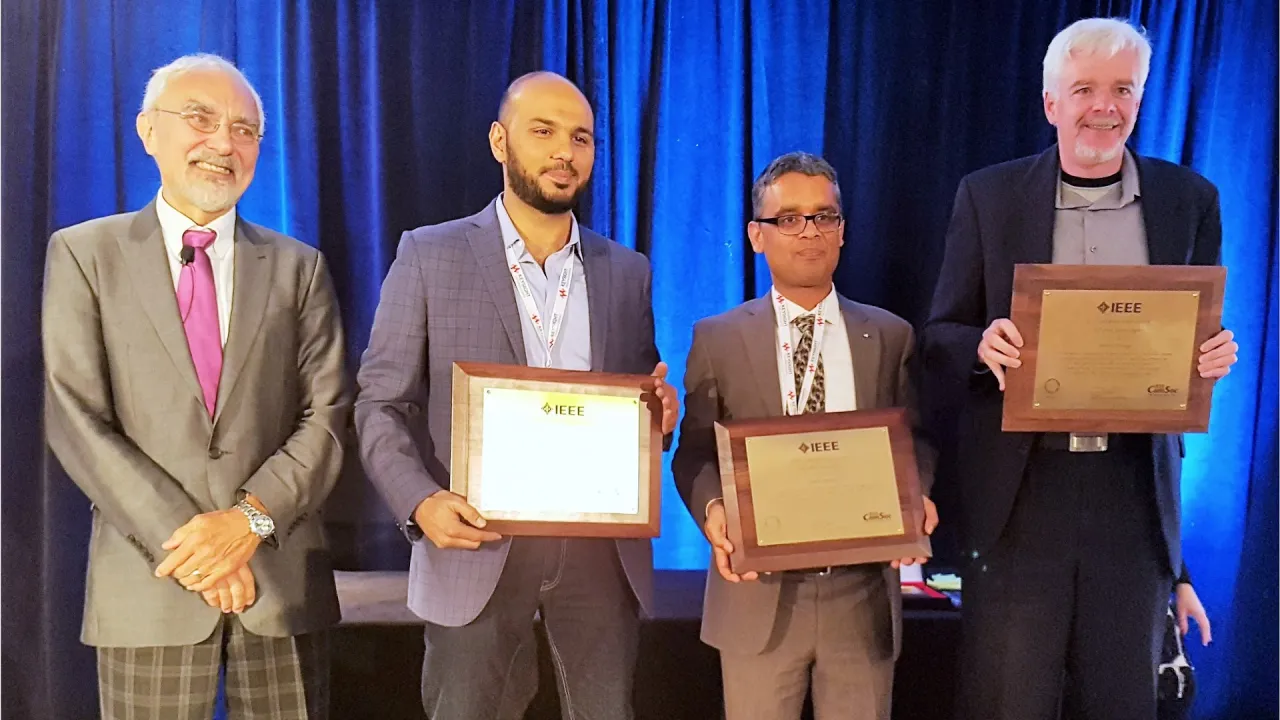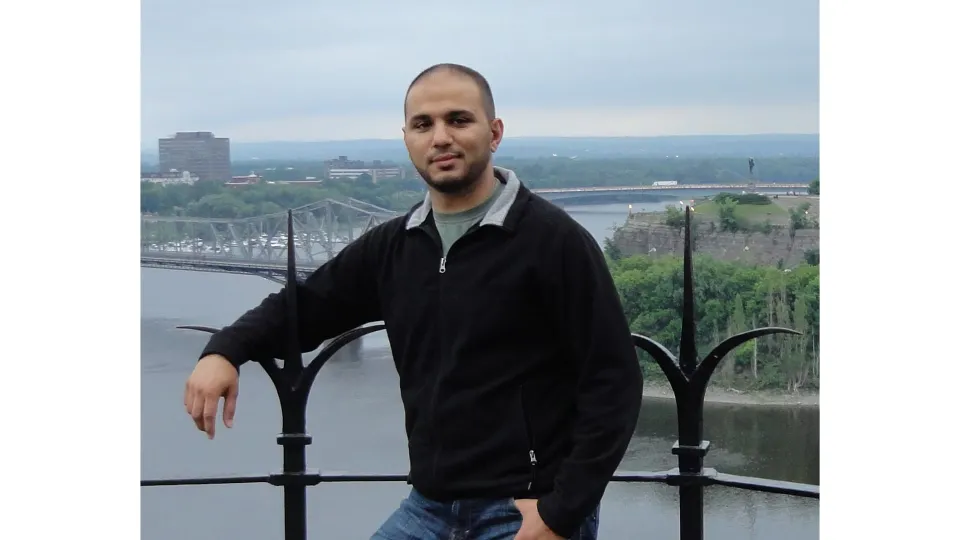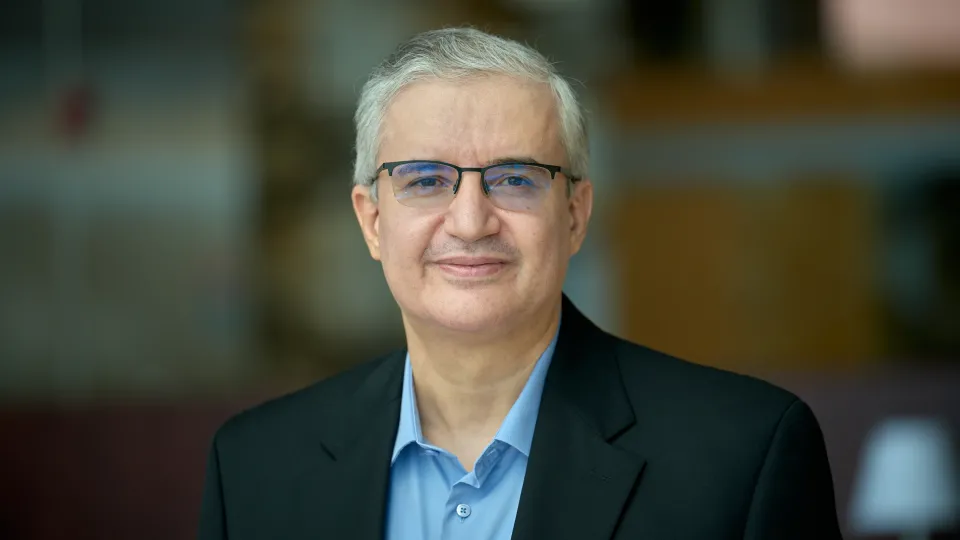
Hesham ElSawy wins IEEE Communication Society
The Internet of Everything in quickly growing and vastly enlarging its spectrum of applications. At the same time, traffic demand per-user is increasing dramatically. It is estimated that by 2020 there will be more than 50 billion devices connected. The cellular support infrastructure should be developed accordingly, making of network performance analysis a critical task. The existing elementary probability methods are currently inefficient when it comes to detecting mobility faults and interference.
About
- By Valentina De Vincenti
The Internet of Everything in quickly growing and vastly enlarging its spectrum of applications. At the same time, traffic demand per-user is increasing dramatically. It is estimated that by 2020 there will be more than 50 billion devices connected. The cellular support infrastructure should be developed accordingly, making of network performance analysis a critical task. The existing elementary probability methods are currently inefficient when it comes to detecting mobility faults and interference.
A solution to this problem was presented by Dr. Hesham ElSawy at the IEEE Communication Society 2017, where it was awarded "Best Survey Paper". His comprehensive survey paper, titled "Stochastic Geometry for Modeling, Analysis, and Design of Multi-Tier and Cognitive Cellular Wireless Networks: A Survey", impressed the judges at the conference.
ElSawy is an investigator at the Communication Theory Lab, directed by Professor Mohamed-Slim Alouini within the Computer, Electrical and Mathematical Sciences and Engineering (CEMSE) Division.
"I feel honored, as this award is a real sign I was on the right path, and hard work truly pays off. My aim was to provide engineers with a comprehensive and much reliable statistical tool," said ElSawy collecting his award on May 21, as part of the 2017 IEEE International Conference on Communication held in Paris.
The Institute of Electrical and Electronics Engineers (IEEE) is the world's largest technical professional society. Today the Institute has more than 400,000 members who conduct and participate in its activities from 160 different countries. The IEEE Communications Society (COMSOC) embraces all aspects of the advancement of the science, engineering, technology and applications for transfer of information between locations by the use of signals.
The IEEE COMSOC award committee chaired by Prof. Lajos Hanzo, from the University of Southampton, chose the CEMSE Post Doc's work for its remarkable contribution to advancing the fields of communication bringing an innovative solution and easy-to-work statistical tool for a large variety of applications.
The 2017 Paris edition of the Conference "Bridging People, Communities, and Cultures" explored the impact of communication systems in everyday life, much beyond the business and technology arenas.
ElSawy's success came out from a very competitive selection of communications survey papers published in the last five years.
ElSawy's novel approach lies on a much easier taxonomy able to extend and simplify the realm of stochastic geometry application to communication networks. Although it is an advanced branch for platform probability, stochastic geometry is still used mostly in applied mathematics for agriculture or astronomy.
"I have noted that a new research area dealing with the modeling and analysis of multi-tier and cognitive cellular wireless networks is increasingly attracting the attention of the research community. But engineers still struggle to find it compelling. I wanted to translate this mathematical tool into the engineering world in much easier words than previous papers," stressed ElSawy.
Dr. Hesham ElSawy joined the Computer, Electrical, and Mathematical Sciences and Engineering Division at KAUST, as a postdoctoral fellow in April 2014. Before that, he obtained his Ph.D. degree in electrical engineering from the University of Manitoba, Winnipeg, MB Canada, in 2014. During his Ph.D. studies, he worked with TRTech, Winnipeg, MB, Canada, as a Student Researcher. For his academic excellence, he has received several academic awards, including the Canadian Natural Sciences and Engineering Research Council Industrial Postgraduate Scholarship (NSERC-IPS).
His research interests include statistical modeling of wireless networks, stochastic geometry, and queueing analysis for wireless communication networks.
While being in KAUST, ElSawy has published over 40 technical papers that use stochastic geometry to solve cutting edge problems in wireless communications.
Out of these papers, ElSawy stressed on his novel tutorial paper on stochastic geometry that is published in the IEEE communications surveys and tutorials journal, the journal with the highest impact factor in the electrical engineering discipline. "This time I go deeper into the Maths developed along with colleagues from KAUST and MIT. The paper has already gotten great feedback, even from people who have been working in the field for some time, and failed to notice such insights," concluded ElSawy.

